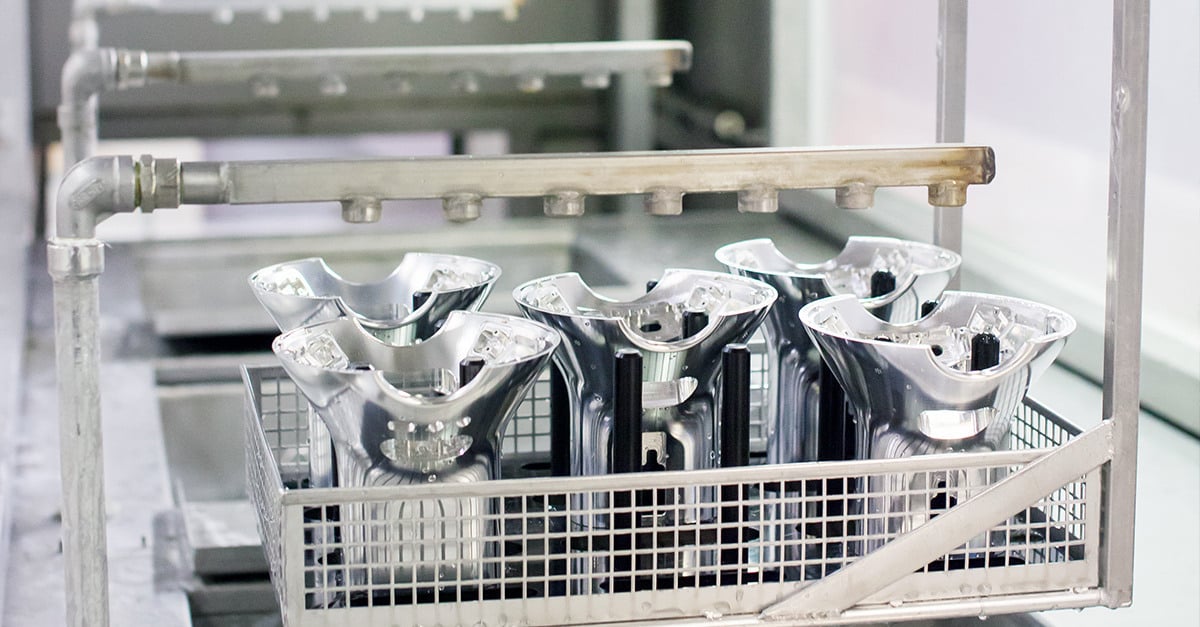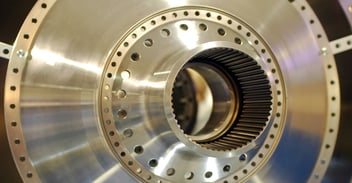In the first blog of the series “How an Idea becomes a product?”, we walked through the different stages of the product development process – the last of which is a production pilot. In this article, we’ll take a closer look at what happens after the pilot phase: the stages of component manufacturing.
The various steps in our machining department form a manufacturing process where raw material is transformed into a component that matches the technical drawings. Every phase – from sawing and machining to surface treatment and final inspection – requires careful pre-planning and skilled execution.
>> Read the first blog of the series: Product development process – How an idea becomes a product
What happens before component manufacturing begins?
Before a customer places an order, they’ll discuss with a member of our sales team. The customer sends a request for quotation (RFQ) to Mectalent along with the technical drawings of the part. Based on this, the sales manager prepares a quotation. Once the customer accepts the offer and places the order, Mectalent begins preparing for the production process.
The order is entered into our ERP system, and a part structure is created. The manufacturing methods and required resources are defined, and a work order is prepared for the part. The work order includes:
- Part identification information
- Production schedule
- Work phases
- Machines used
- Material specifications
The work order follows the part throughout the manufacturing process and ensures that production proceeds correctly.
Raw materials are ordered if not already available in stock. We also ensure that the correct tools and cutting blades are available for the machines.
>> Read how to create a good RFQ for machining services
First step in component manufacturing: Cutting the blank
The first manufacturing step is cutting the raw material to working dimensions for machining. The raw material might be aluminum, steel, or titanium. This creates a blank, which is then marked with identification information for traceability. These markings include, for example, the customer’s order number and the material batch number.
Material properties such as hardness and thermal expansion must be considered during cutting. When the raw material is cut correctly, the machining process can proceed efficiently, avoiding unnecessary corrections or material waste. This helps reduce production costs, speeds up the process, and ensures high product quality.
CNC machining: Shaping the part from the blank
In the machining phase, the part is shaped by removing material from the blank. This is typically done through milling or turning, and the part may go through several machining phases before reaching its final form. Machining is usually performed with computer-controlled CNC machines, although individual pieces can also be made manually.
Before machining can begin, a setup is done to prepare the machine. If CNC machining is used, a CAM program is created using the 3D model of the part. The program includes:
- Toolpaths and movements
- Tool changes and corrections
- Spindle speeds and feed rates
- Coolant management
- Coordinate systems
The blank is securely clamped into the machine, and the programmed tools are loaded into the tool changer. A test run is performed before the actual machining begins. The process typically starts with rough machining to remove excess material, followed by finish machining to meet exact tolerances and surface quality requirements. Additional operations such as drilling, threading, and engraving are performed as needed.
Quality assurance is a crucial part of the machining process. The quality of the parts is monitored visually and through measurements. Measurements follow the customer’s product specifications and any additional testing or inspection instructions.
After machining, post-processing may be required. Burrs can be removed by tumbling, or parts can be cleaned using glass bead or silicon carbide blasting.
>> Read the blog: 5-axis machining – efficiency for precision parts manufacturing
Welding in component manufacturing: TIG, MIG, and laser welding

After machining, parts may need to be joined together. The appropriate welding method is selected based on the material and its thickness. Production efficiency and the desired cleanliness of the weld also affect the method choice.
Welding methods may include TIG, MIG, or laser welding. MIG is a fast option, while TIG is often selected for high-precision jobs. Laser welding offers precise control, even in hard-to-reach areas, and can be done from one side if needed.
Cleaning is a critical step in component manufacturing
Cleaning machined parts is essential for several reasons:
- Contaminants can affect part functionality
- Only a clean part can be measured accurately
- Surface treatments such as anodizing, painting, or coating require good adhesion
- Assembly quality is improved
Parts are cleaned after machining and before tumbling or welding. They are also cleaned after tumbling and welding and whenever necessary. The cleaning method is selected based on the part’s size, shape, and required cleanliness level. Methods include ultrasonic cleaning, solvent cleaning, and water or steam washing.
Surface treatment protects the part and enhances material properties
Surface treatment is often performed to change the color or texture of a part or to enhance its material properties, extending the part’s service life.
The goal of surface treatment may be aesthetic or protective. Polishing, chemical treatment, or coating can protect parts from wear, friction, or temperature fluctuations. For example, parts used in health technology are treated to be easier to clean and sterilize.
Marking ensures traceability
Machined parts are often marked with identification or other information, either through engraving or laser marking.
For instance, orthopedic surgical drill bits and their matching screws can be marked with the same color code. Markings may also include serial numbers, QR codes, logos, or compliance marks such as the CE marking.
Markings help with traceability, allowing manufacturers to track production batches and processes. This is especially important for medical device components and parts produced for the defense industry, where markings support safety and quality compliance.
Final inspection and packaging before delivery
Final inspection may include visual checks, precision measurements, and functional testing. The method depends on the part’s requirements, but it’s essential to confirm that there are no scratches or dents, measurements are within tolerance, the surface finish is correct, and the surface treatment is flawless.
Once the final inspection is complete and documented, the part is packed for delivery. Packaging is chosen to protect the part from damage during transport and storage, such as impacts or moisture. Custom components may require specially designed packaging solutions.
Product development and manufacturing under one roof
Mectalent provides comprehensive product development and manufacturing services under one roof. Our product development services cover everything from concept design to mechanical and automation design.
When design and manufacturing are done in the same place, you save time and effort:
- No need to search for different specialists – we have all the expertise in-house
- No concerns about coordinating multiple suppliers – we ensure a smooth process
- No extra project management – our project managers handle the big picture for you
- We design products in accordance with our own manufacturing methods, which speeds up production and ensures high quality
Contact our sales team to discuss how we can support your next project!




